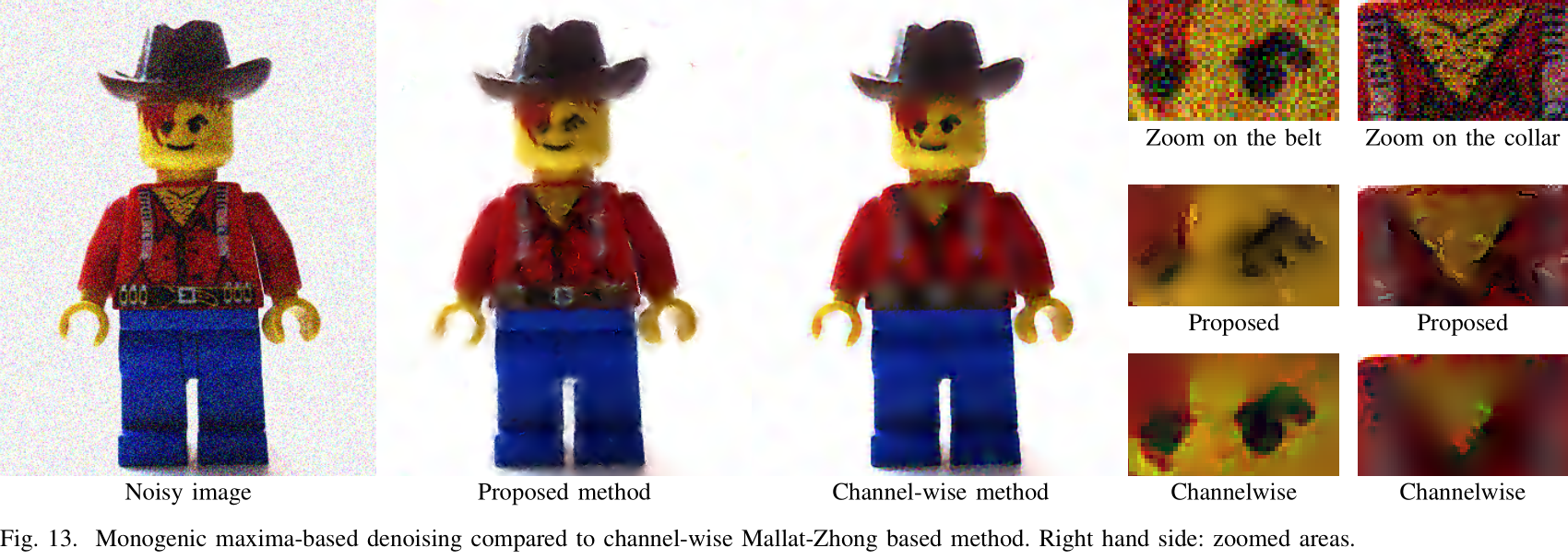Work in progress...
Monogenic maxima
Monogenic maxima extraction

Inspired by the wavelet maxima representation introduced by S. Mallat in 1992, we have proposed the monogenic maxima representation. This evolution adds isotropy, phase concept, and color management to the classical tool.
The method selects particular points being local maxima in the monogenic amplitude, record the associated monogenic features, and try to reconstruct the whole image from this very sparse data. For the first stage of maxima detection, we use a sharpness measure based on amplitude, that produces a high score on maxima, while favoring the steeper ones.
x+ and x- are the neighbour coordinates around x0, chosen in the direction orthogonal to the local contour. This information is given by the structure tensor direction theta. d+ and d- are the amplitude differences from these neighbour locations.
Then a sparse selection is made so as not to retain all neighbour samples along amplitude crests, which would be redundant. The selection is based on a radius around steepest maxima.



Finally, for every maximum kept, and at all scales, the following feature-set is recorded as local visual information:
We conjectured that this information is enough to reconstruct the whole image. The experimental proof of this conjecture requires to carry out the reconstruction algorithm. Before running the synthesis part of the filterbank, the multiscale monogenic data has to be retrieved around the maxima.
Interpolation around maxima
The process requires to interpolate the data around the maxima before running the synthesis filterbank. To this end, the image must be segmented around every maximum into proper areas of influence.
We have proposed the following interpolation models for amplitude and phase.
The amplitude model is based on two Gaussian curves as:
The phase model is exponential, as can be seen on the figure. Note that all the other elliptical monogenic features can be interpolated as locally constant, which is very easy.
Keywords: wavelet maxima References: Soulard & Carré IEEE TPAMI 2017 / Mallat & Zhong IEEE TPAMI 1992
Color image progressive reconstruction
A good illustration of our representation of color images by monogenic maxima is progressive reconstruction.





Preliminary denoising experiments
Monogenic maxima representation is promising as a highly descriptive encoding of visual objects, that could be cleverly regularized for denoising purposes.
Here is an example of maxima-based color regularization, compared to a channel-wise use of the classical wavelet maxima algorithm (from Mallat & Zhong).
